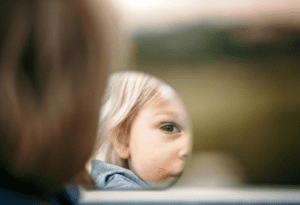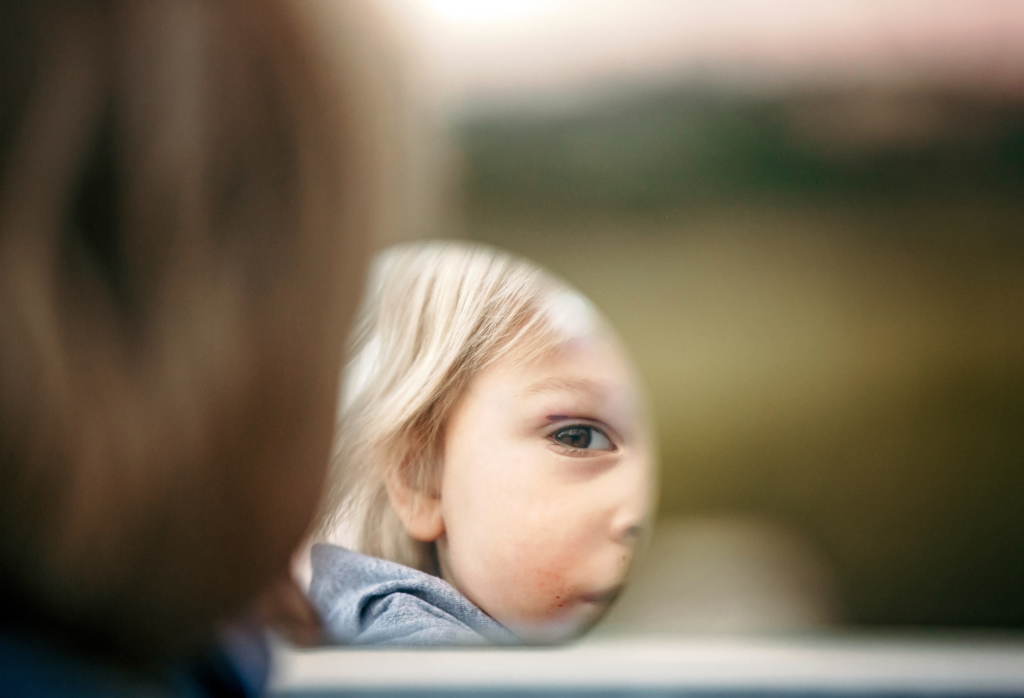January 15, 2023
In this week’s article, we examine the developmental aspects that play into Social Ability with the dawning of “I” awareness. It is the third article in a series that will focus on the development of social ability throughout early childhood.

This month we look at the developmental phase of around three years old, when our child stands at a great threshold. In simple statements like, “I do it” instead of “Molly do it,” they indicate to us at this phase that they have reached the first awakening of self-awareness. They have come into themself enough to begin to know they are separate from the world; and this journey of self-realization will have many significant milestones along the way. The same message is hidden in acts of seeming defiance and unpredictable behaviors. They are caught in the subconscious vacillation of standing on their own, and still wanting and needing to be held.
Contained within these first three years as well is the emergence of three monumental capacities: walking, speaking, and thinking. As the three build upon each other, so do they lead to the development of higher senses that connect us to the world at large, that of which our three year old is now beginning to discover.
“Now this means that the first three years of life are those which prepare the child to become a member of humanity…. The sense of Word develops out of walking and thereby speaking comes into being; the sense of Thought develops out of speaking and thereby thinking emerges, while the sense of Ego develops out of thinking that thereby the knowledge, the immediate sensory experience arises that the other person is an individual. You see, walking, speaking and thinking are the prerequisites for a social organism.” -Karl Konig
Now, as we have the opportunity to watch them mature, it is our task to carefully protect and support the free-growth of these capacities. With such guidance, our child may take hold of their own potential and eventually fulfill their greatest contributions to the social and natural worlds.
 We do this in early childhood by creating consistent daily, weekly, and yearly rhythms that align the natural rhythms of the seasons and the community. These rhythms are breathing and balanced, with anchors for the basic needs of sleeping and resting, eating, and playing both indoors and outdoors. They are slow and intentional; and are warmed with joyful, nurturing moments of connection. The day’s activities include opportunities for our child to complete tasks for themself, and to help in family work. And, throughout, we are striving as adults to model positive behaviors, habits, and states of being.
We do this in early childhood by creating consistent daily, weekly, and yearly rhythms that align the natural rhythms of the seasons and the community. These rhythms are breathing and balanced, with anchors for the basic needs of sleeping and resting, eating, and playing both indoors and outdoors. They are slow and intentional; and are warmed with joyful, nurturing moments of connection. The day’s activities include opportunities for our child to complete tasks for themself, and to help in family work. And, throughout, we are striving as adults to model positive behaviors, habits, and states of being.
These consistencies provide a foundation of simultaneous protection and freedom. As our child makes their first pushes against us, they make the discovery of separateness. As they continue to be embraced by our rhythms and expectations, they feel the security necessary to continue confidently on the journey of self-awareness. Without that sense of security, they would be bound by uncertainty and fear; with it, they are given the best start towards self-realization.
Blessings on your parenting and work,

**Karl Konig was an early 20th Century pediatrician who worked intimately with children of special needs as well as child development in general. He studied Rudolf Steiner’s work, became a prolific author and founded the Camphill movement, living and working communities for children and adults with special needs, which eventually spread worldwide.
Find support in guiding your young child!
We are currently enrolling for one of our most popular courses, Discipline with Loving Awareness with Cynthia Aldinger. To learn more and enroll today, visit the course page here.
Are you connected to LifeWays for news on the latest courses, newsletters and uplifting stories? Connect with us today by clicking on our email and social media icons below the title of this post.
